Launch new entry level Digital Media Management Platform
Imagen
Imagen help businesses, sports organisations and media companies manage their content libraries by providing a highly-customisable media management platform. As part of their strategy to unlock new revenue streams and create wider market share, Imagen wanted to create an entry level product which leveraged the tech and features from their current platform, Imagen Pro.

Overview
Imagen offers digital content management solutions for multinational businesses like Aon, BP, and Reuters to organize, access, and distribute their video and digital media files across teams and locations. My role involved researching and identifying market opportunities, conducting qualitative stakeholder analysis, defining the new product's features and design through workshops and hi-def prototypes for development. I collaborated with Imagen's CPO, CTO, and senior stakeholders to establish a unified product vision, as well as with marketing and development teams during research and development phases.
-
158
Downloads in first week -
82
Net Promoter Score -
160
Signs ups in first month
Skills & Tools
User Interviews
User Journeys
Client workshops
Empathy Maps
User Experience Maps
Personas
Prototyping
Wireframing
Visual Design
Interactive Design
Figma
Miro
Discover
Before engaging with external stakeholders, I conducted interviews with various staff members at Imagen to understand Digital Asset Management (DAM), current users, and the performance of the current Pro platform. This also provided insight into company culture and team expectations for the new product. Additionally, I analysed competitors' entry-level DAM products, examining their features, subscription models, and pricing, supplemented by gap analysis from the marketing department.
The insights from internal interviews guided the strategy for external stakeholder interviews with digital managers and marketing executives. These interviews focused on understanding their media organisation methods, common pain points, DAM requirements, as well as their approach to researching and adopting new digital products.

Define the challenges
Consolidate the product vision
After interviewing internal stakeholders it was clear that there were multiple visions for the one product. In order to gain traction we needed to democratically consolidate the product vision as a group and more importantly make it user centric.
Provide a streamlined experience
The Pro platform is heavily supported by product specialists with custom features that are 'bolted on' for specific customers. In order to be successful, the entry level product would need to be significantly simpler and used without the aid of the in house support team.
Support first time use - onboarding
Interviewing potential users of the entry level product confirmed that any new digital product would need to seamlessly fit into the adopter's digital landscape and provide an initial frictionless journey, otherwise it would run the risk of being immediately abandoned.
Develop the solution
Consolidate the product vision
In order to democratically create the product vision it was important to involve a wide variety of Imagen team members across different departments in online workshops. It was also key to ensure that each member fully understood who they were creating the product for, so my first task was to present my findings from earlier in the form of empathy maps (these would later develop into full personas), which went some way to shifting the focus onto the ned user.
Team members were also placed in multi-disciplinary groups and asked to create position statements which defines the product, who it's for and why it's different from existing alternatives. They were then tasked with creating their own empathy maps based on the earlier findings, but instead focussing in on a particular user journey. Fully focussed on the end user, the groups were then asked to suggest features which could support the user during each phase. The workshop was rounded off by creating a final position statement which reflected the groups new findings.

Provide a streamlined experience
As an entry level product, Imagen Go would leverage the same tech that was used by its older sibling, Imagen Pro. Given that the Pro offering consisted of a multitude of client specific features, not to mention was supported 24/7 by a product specialist team, we needed to ensure that our entry level product was instead lightweight and self explanatory. As part of the earlier workshops and with the aid of a visual user experience map, Imagen workshop groups were able to suggest only key feature sets based on user requirements and development capacity. At the end of the workshop the different groups then came together and product features were subsequently prioritised using impact vs effort grids and MoSCoW, creating a final product feature set.
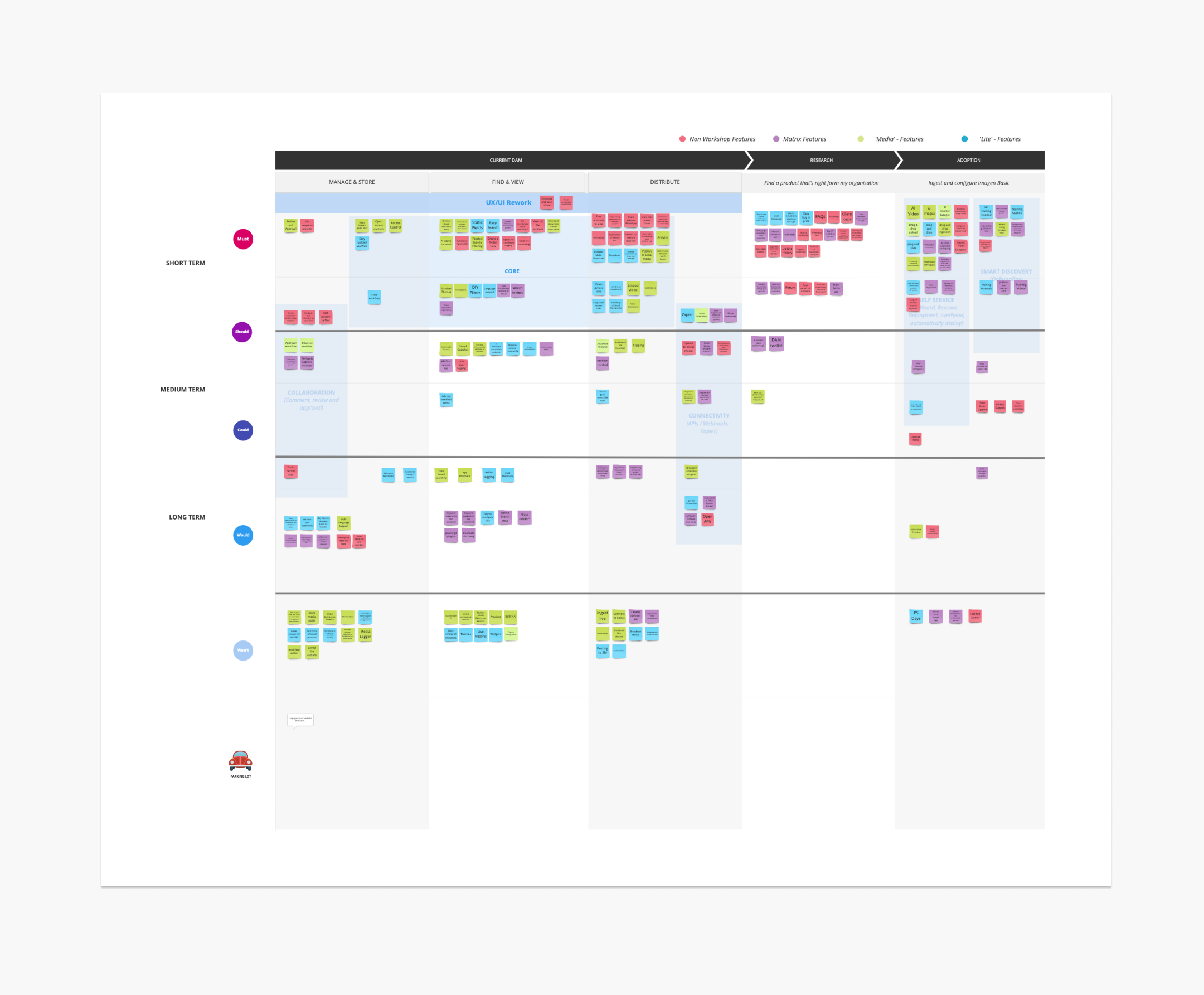
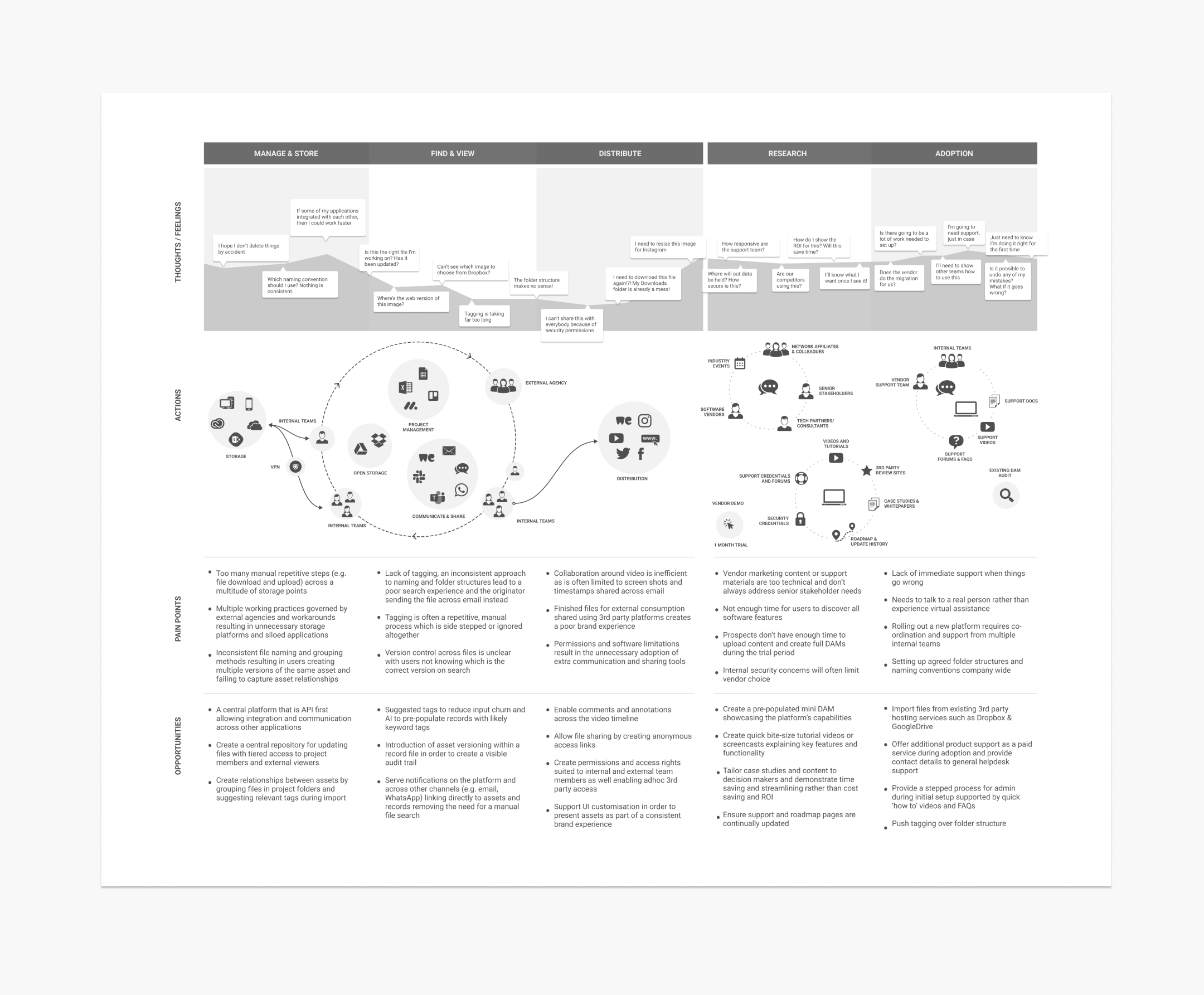
Support first time use - onboarding
In order to foster early adoption it was important that Imagen Go not only had an open API which would eventually integrate with other applications through Zapier, but was fundamentally easy to use. Not only did we ensure that we had a demo project included on the dashboard which would allow users to experiment with features but that we also had an interactive click through guide which coached new users into uploading their first digital asset.
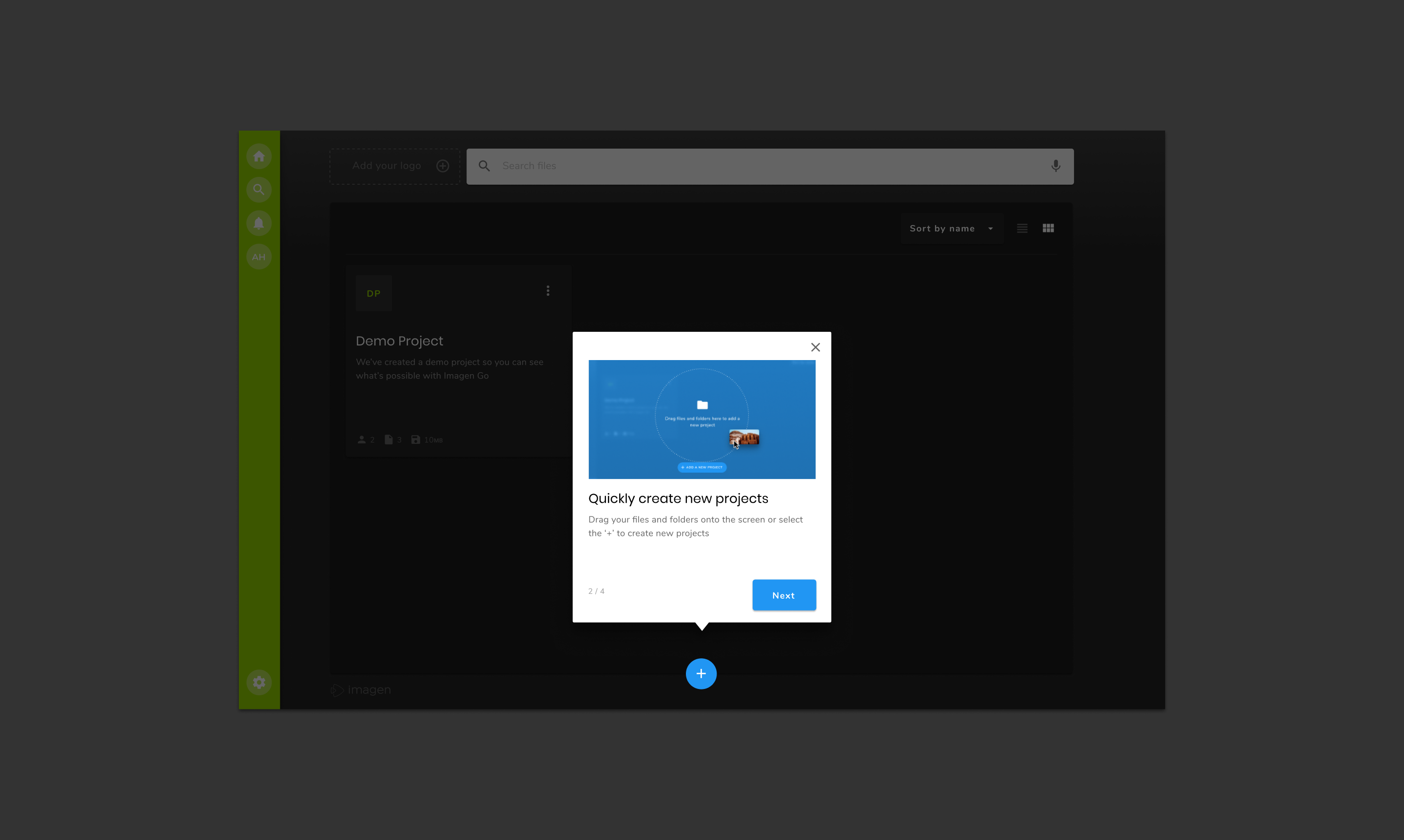
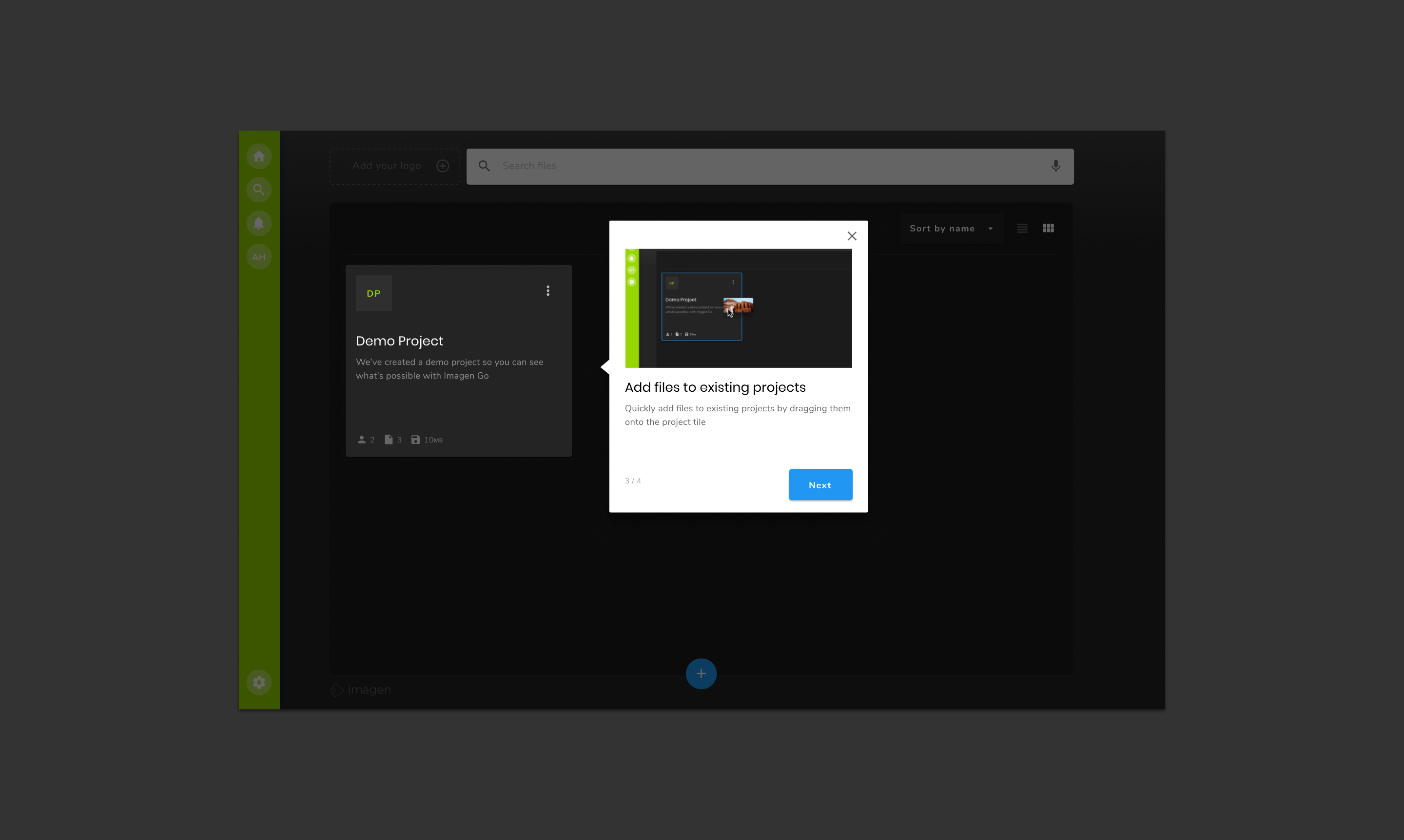
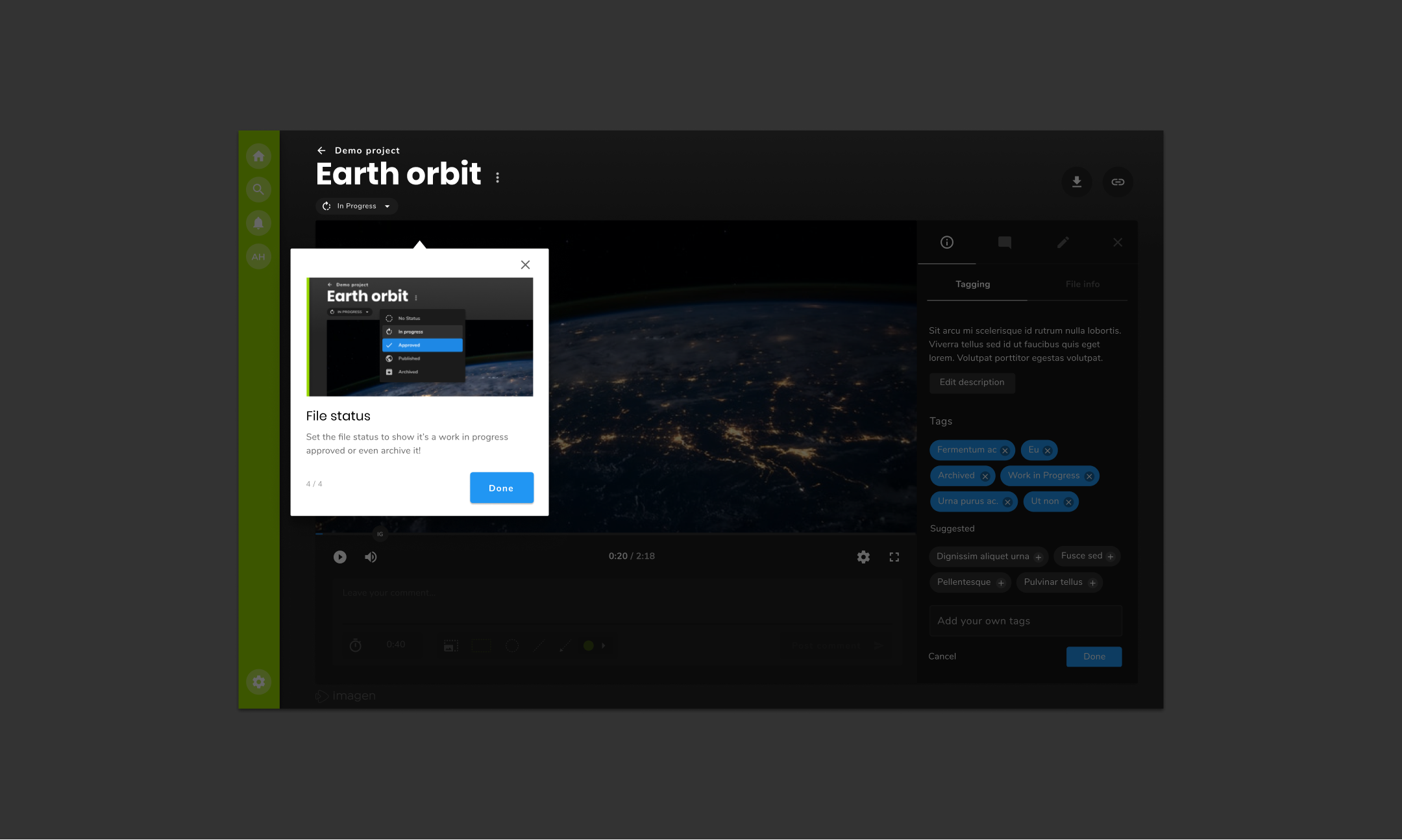
Dashboard
Unlike Imagen Pro, Imagen Go was given a simpler graphical interface that solely focuses on users creating new projects or modifying existing ones, all of which can be achieved through the user's project dashboard. The project is very much the focus of the application, all other secondary journeys and features are removed in favour of focussing in on core project interactions such as accessing updates and editing key information.
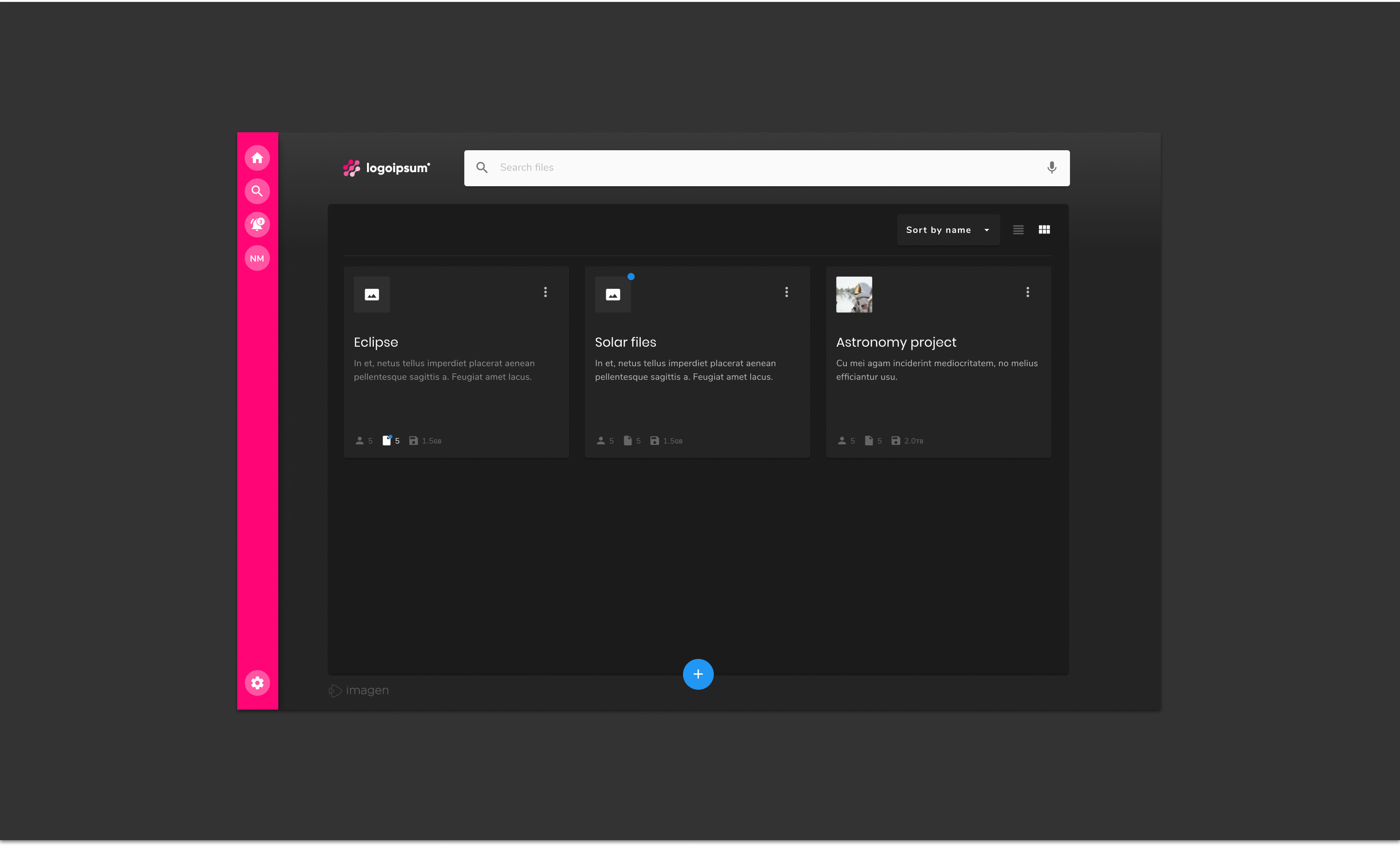
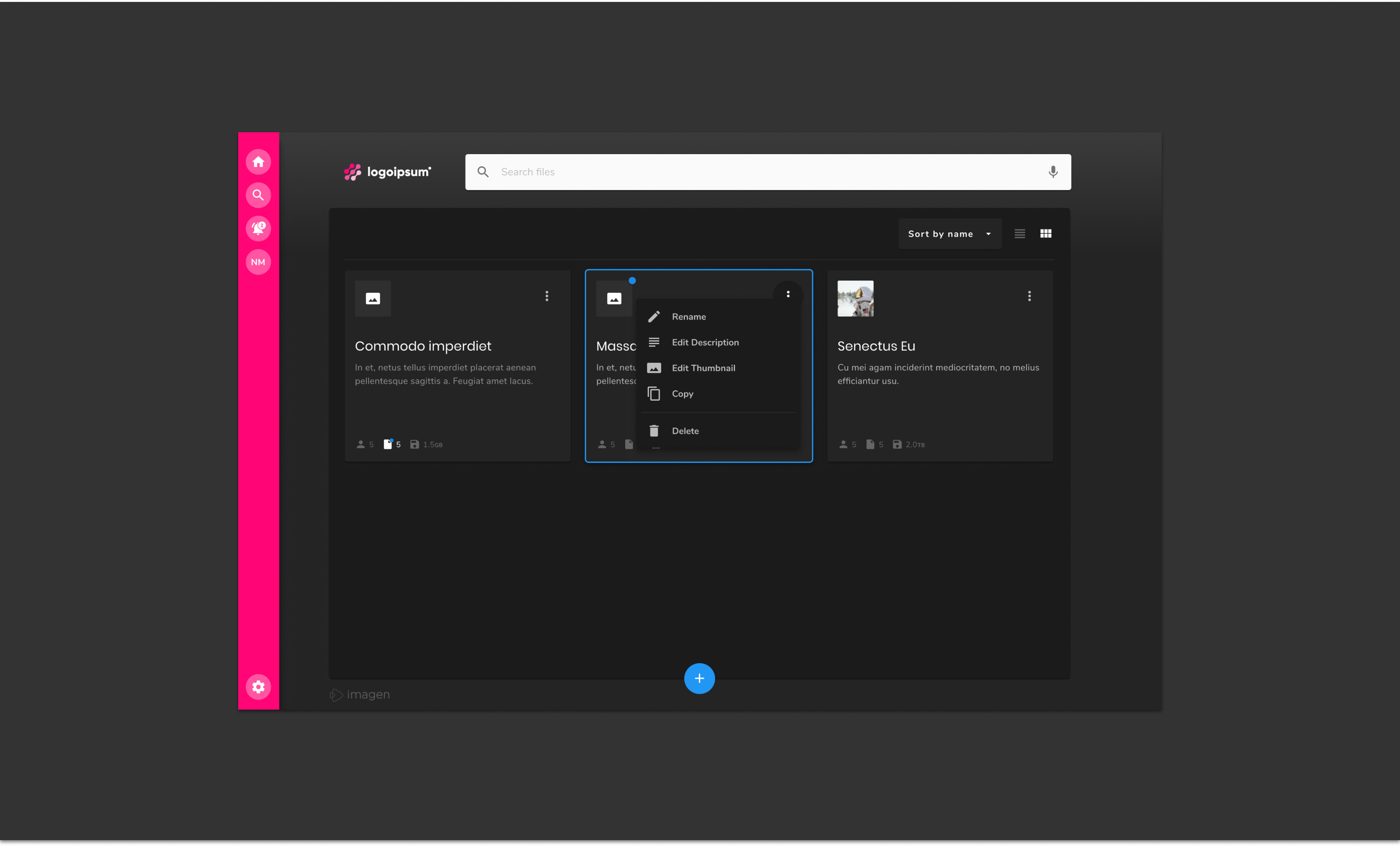
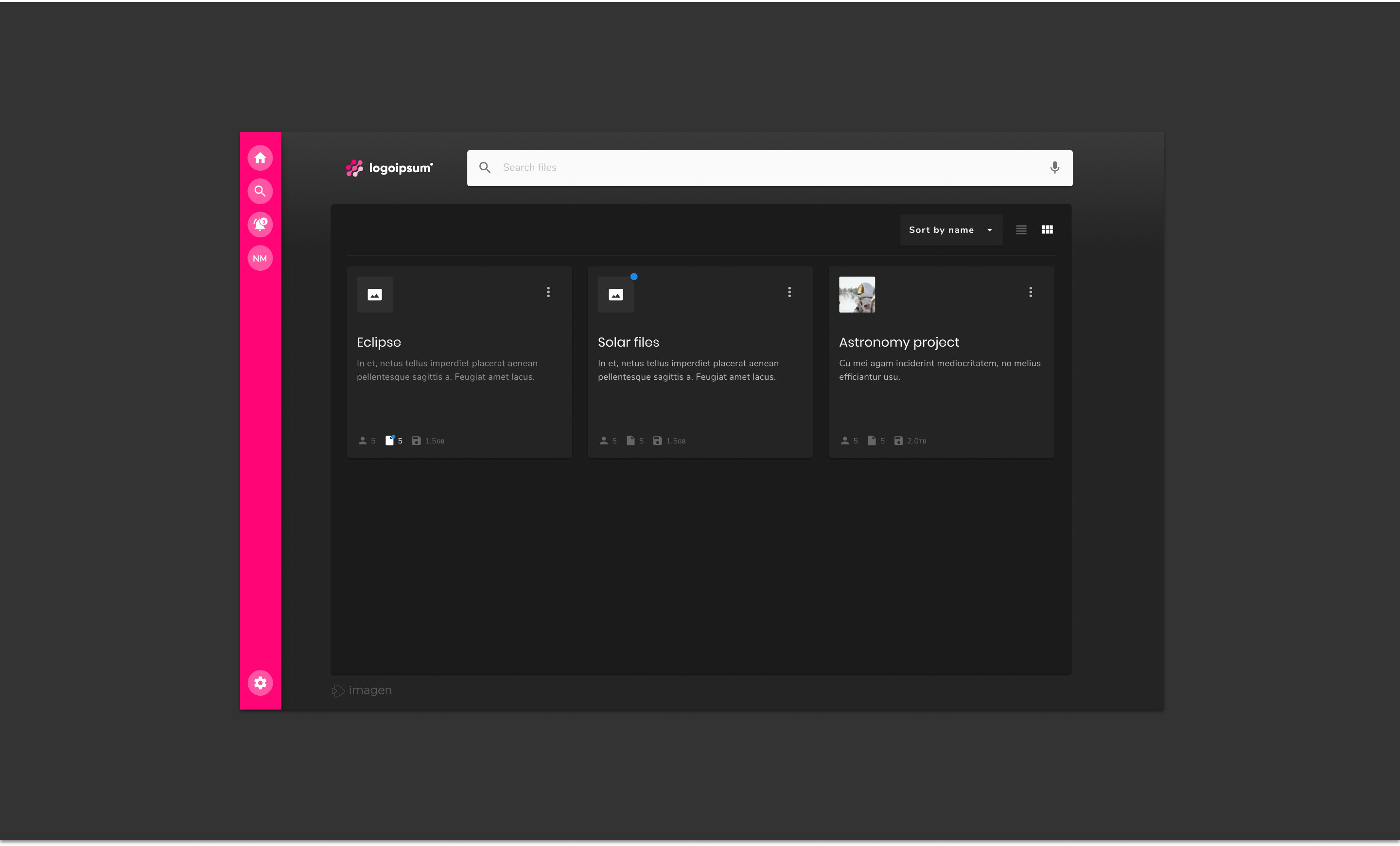
Record management
Part of Imagen Pro's appeal is the ability to effectively tag and find project media through enhanced AI, this could be as simple as providing feedback on a photo or as complex as graphically hi-lighting segments of a movie. Imagen Go leverages this and adds the ability to post comments making the platform more collaborative which plays to user requirements discovered earlier in the project. In order to house these complex features and not overwhelm the user, the features are logically grouped and are viewable only when needed keeping the interface clean and the focus solely on the media.

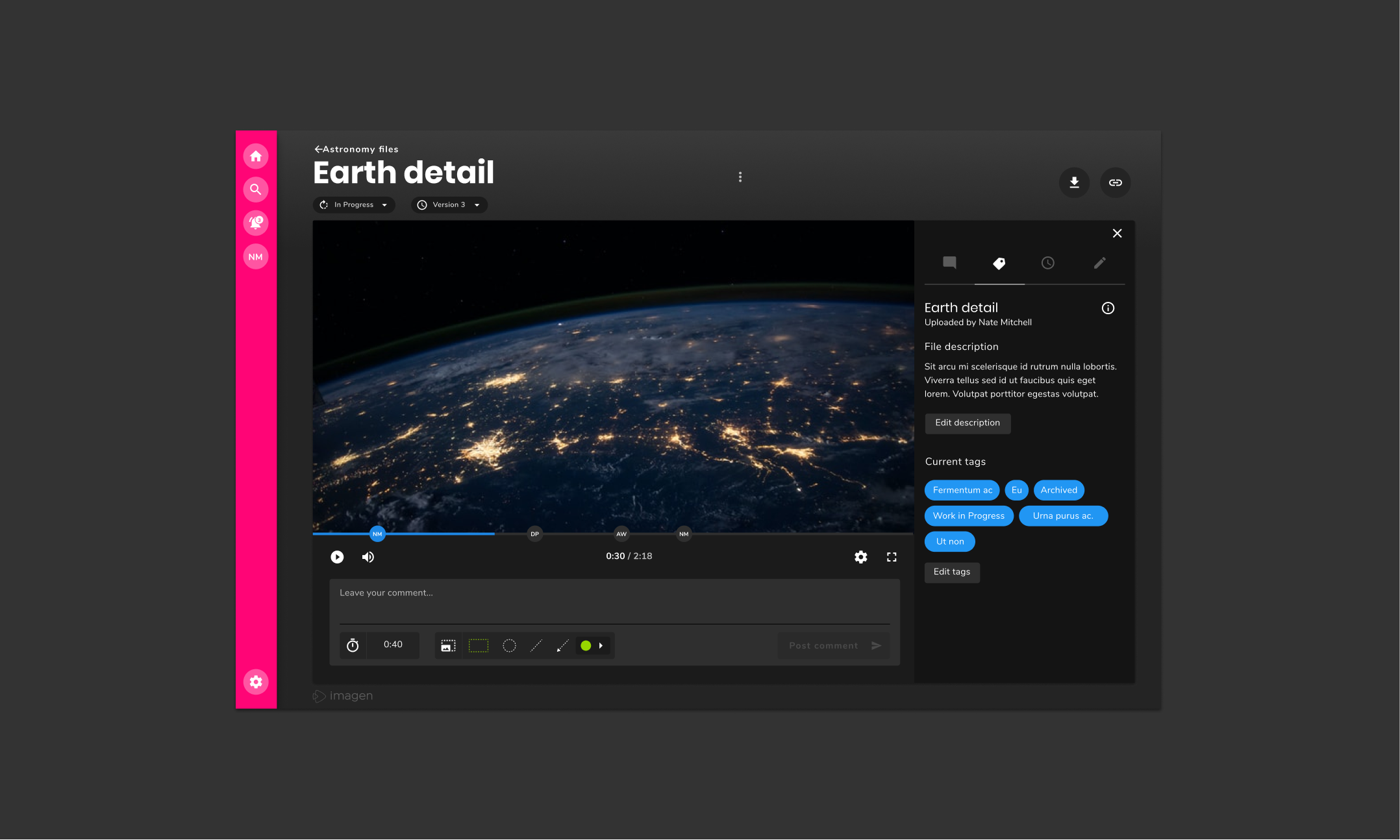
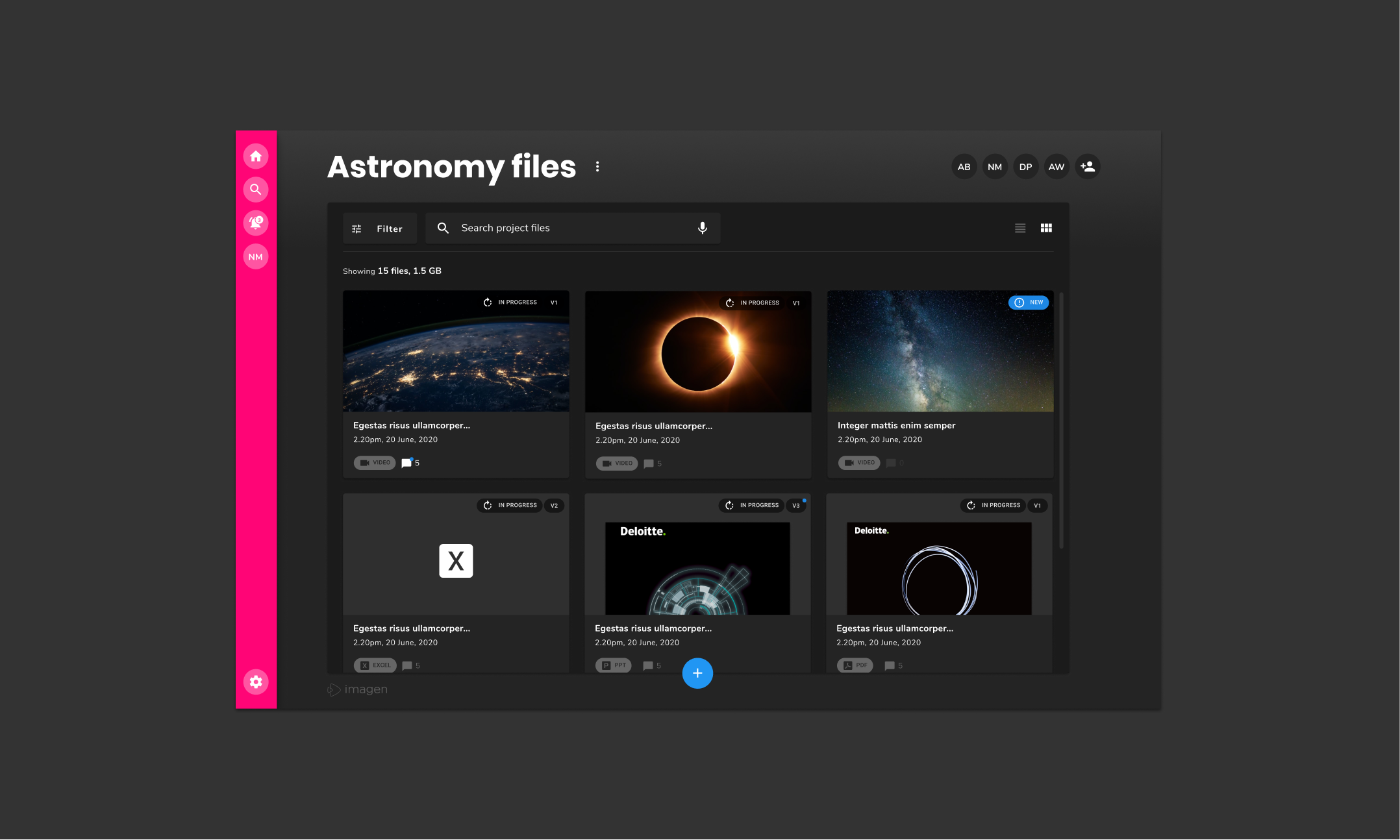
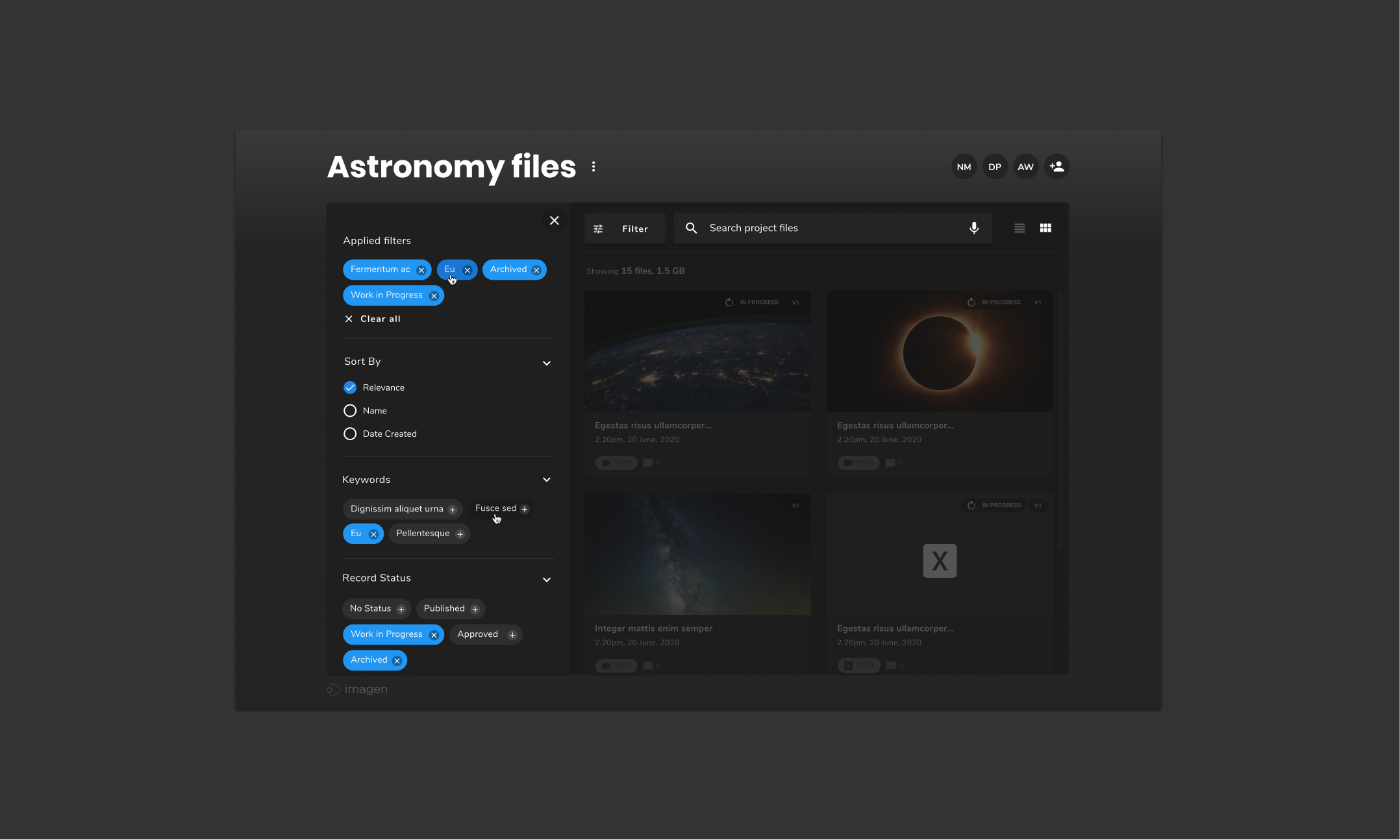
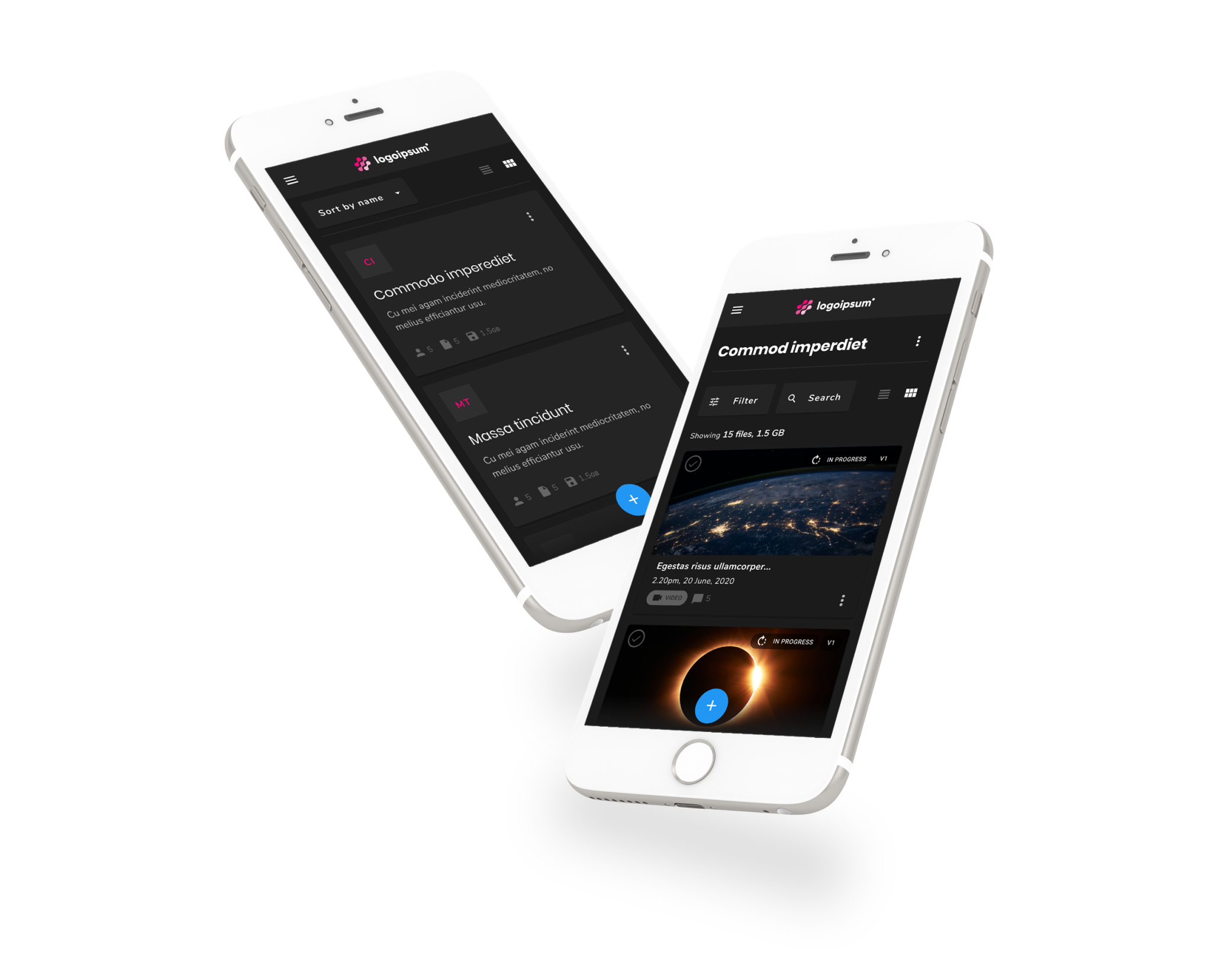
Outcome
The product was successfully launched in the first quarter of 2021 and gained early traction, especially with some existing clients who wanted to integrate some of the UI improvements into the current Pro offering. By creating Go, Imagen were able to increase market share and more importantly provide a clear pathway to upgrading to their Pro offering.
Why not drop me a line?
If you have an upcoming project and need help, I'd love to be involved! Just get in touch and let's get started.